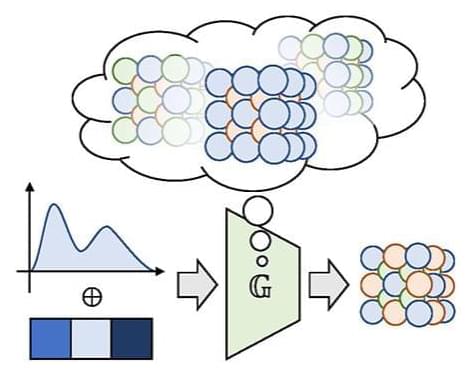Researchers are warning of a new evolving botnet that has been spotted in the wild and has worm-like spreading capabilities to infect Linux systems.





The person staring back from the computer screen may not actually exist, thanks to artificial intelligence (AI) capable of generating convincing but ultimately fake images of human faces. Now this same technology may power the next wave of innovations in materials design, according to Penn State scientists.
“We hear a lot about deepfakes in the news today – AI that can generate realistic images of human faces that don’t correspond to real people,” said Wesley Reinhart, assistant professor of materials science and engineering and Institute for Computational and Data Sciences faculty co-hire, at Penn State. “That’s exactly the same technology we used in our research. We’re basically just swapping out this example of images of human faces for elemental compositions of high-performance alloys.”
The scientists trained a generative adversarial network (GAN) to create novel refractory high-entropy alloys, materials that can withstand ultra-high temperatures while maintaining their strength and that are used in technology from turbine blades to rockets.

Landing AI, a California-based startup led by Google Brain co-founder Andrew Ng, has just nabbed $57 million in series A for its computer vision platform.
Landing AI’s flagship product, the LandingLens, doesn’t have the highlights you see at Google I/O or the Apple Event, where tech giants introduce how the latest advances in AI are making your personal devices smarter and useful. But its impact could be no less significant than the kind of artificial intelligence technology that is finding its way into consumer products and services.
Landing AI is one of several companies that is bringing computer vision to the industrial sector. As industrial computer vision platforms mature, they can bring great productivity, cost-efficiency, and safety to different domains.

Thousands of kilometers under Earth’s surface, under crushing pressures and scorching temperatures, the core of the planet can be found. There, an inner core consisting of a solid ball of nickel and iron is super-rotating inside the outer core, where the iron and nickel are fluid.
The conditions of this outer core have now been recreated in a lab, by a team led by physicist Sébastien Merkel of the University of Lille in France – in such a way that scientists have been able to observe the structural deformation of iron.
This not only has implications for understanding our own planet, but can help us to better understand what happens when chunks of iron collide in space.

O,.o woah!
This instructs qsim to make use of its cuQuantum integration, which provides improved performance on NVIDIA GPUs. If you experience issues with this option, please file an issue on the qsim repository.
After you finish, don’t forget to stop or delete your VM on the Compute Instances dashboard to prevent further billing.
You are now ready to run your own large simulations on Google Cloud. For sample code of a large circuit, see the Simulate a large circuit tutorial.

Digging in the yard of an old spinning factory in the eastern province of Iğdır last week, some workers discovered an animal skeleton of an unknown species.
The skeleton, which remained intact under the garden, is about 1 meter (3.3 feet) tall and has the teeth of a predator. After the workers noticed that some of the tissue attached to the skeleton had yet not deteriorated, they reported their discovery to the academics at Iğdır University’s Biodiversity Application and Research Center. The academics came to the area where the excavation was made and took the skeleton to the university. They will conduct research to determine the species of the animal skeleton at the university.

